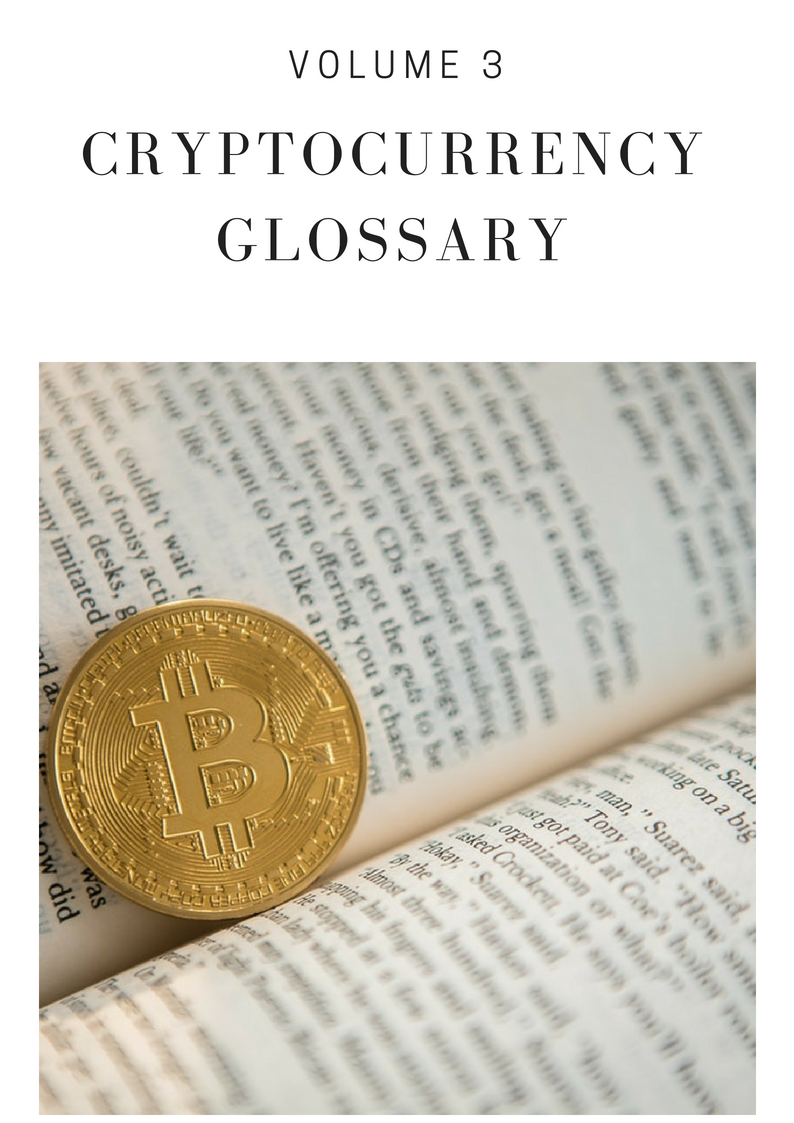A Glossary of Cryptocurrency Basics – Part 3
Feeling more confident in cryptocurrency terminology already? Or are you still a bit intimidated by it? In both cases, it is time for the next part of our cryptocurrency glossary – a comprehensive yet simple guide for the most common terms, expressions and definitions out there related to digital currencies. As already pointed out, we’ve managed to gather a long list of terms, so we’ve divided it into 3 sections. Part 1 and Part 2 have already been published. So, then let’s go for part 3.

Mining – a process with which transactions for cryptocurrency are verified and added to the blockchain. The result of mining is also the release or extraction of new coins.
Mining Rig – refers to a computer system for mining bitcoin.
Node – a participant in a peer-to-peer network. A computer which has a copy of the blockchain or ledger database and is working to update and maintain it. These computers also confirm
P2P or Peer-to-peer – Peers in a network are connected to each other and are able to share files directly without the need for a central server. Peers are equal participants in the network, both suppliers, and consumers (as a part of their resources become available to the other members of the network) and they are also called nodes.
PoW or Proof of Work – consensus algorithm used to validate transactions and produce new blocks in the chain. It requires from the system’s users to solve a task (in other words perform some kind of work), which is usually difficult to resolve but easy for the network to verify.
PoS or Proof of Stake –a method to confirm transactions and to determine which block will be added to the blockchain. It requires the users to have a high stake of a currency which means to own a lot of coin units to be able to define the next block.
Portfolio – a list of different cryptocurrency investments held by a person or organization.
Pump – promoting an asset one owns to artificially boost its price, using incorrect or deceptive statements.
Pump and Dump – a scheme to manipulate (raise) the value of an asset (typically worthless one) by issuing false or misleading positive statements in order to profit from selling (dumping) it afterward.
Rekt – misspelling of wrecked used to describe when someone suffered severe losses.
Reverse indicator – a trader who is mostly wrong when trying to predict price trends and movements.
ROI – Return on Investment – an indicator expressed with the ratio between the net profit and the cost of investment, used to asses the efficiency of the investment.
RSI – Relative Strength Index – an indicator that measures the speed and change of price movements of an asset
Satoshi – the smallest unit of bitcoin currency, equals a hundred millionth of BTC. 1 bitcoin divides into 100 000 000 satoshi units.
Screaming buy – an investment that is largely undervalued with a huge upside potential.
Shilling/pumping – to advertise or endorse (often using misleading statements) a coin in an attempt to inflate its value with the purpose of then selling
Smart contract – software that intends to support and implement a contract. Smart contracts allow plausible transactions to be executed without a mediator or a third party. Digital contract stored in a blockchain.
Snapshot– the state of a system at a particular point in time
Spoofing – price manipulation by placing multiple orders for an asset in order to create false perceptions of demand and supply.
Stop order – an order to buy or sell an asset only when its price moves beyond a specific target (known as a stop price) For sell orders – sell when a price goes below the target; for buy order – buy if the price goes above the target. It is used to limit losses. When the asset reaches the target price, the stop order becomes a market order.
Store of value – an object that has imperishable value and can be stored for future use. The focus is on the object’s ability or function to retain its value through time.
TA or Technical analysis – analysis method of estimating and forecasting price movements by observing current and past market data. Trend analysis is a technique in technical analysis, similarly predicting future trends by analyzing current and/or past trends.
To the moon – upward price movement
Transaction Fee – when dealing with cryptocurrency, there are 3 types of transaction fees – the fees for trading on exchanges, the fees for transactions and wallet fees.
Volatility –when used more generally, it means unpredictability, when used specifically refers to price fluctuations and variations.
Weak hands – an investor who is short of capital to buy an asset or lacks the conviction to stick to a trading plan. Such a person is afraid to take risks, backtracks at the first sign of a difficulty. They play it a little too safe and that makes their trading predictable.
Whale – an individual which holds a large amount of cryptocurrency and thus can manipulate the market.
51 % attack –a potential attack where a single individual or group is controlling more than half of the computing power on a network.
And that’s the end of the glossary of cryptocurrency basics volume 3. If you have found this post useful and interesting, stand by and follow our blog for more news and articles like this.
One Reply to “A Glossary of Cryptocurrency Basics – Part 3”